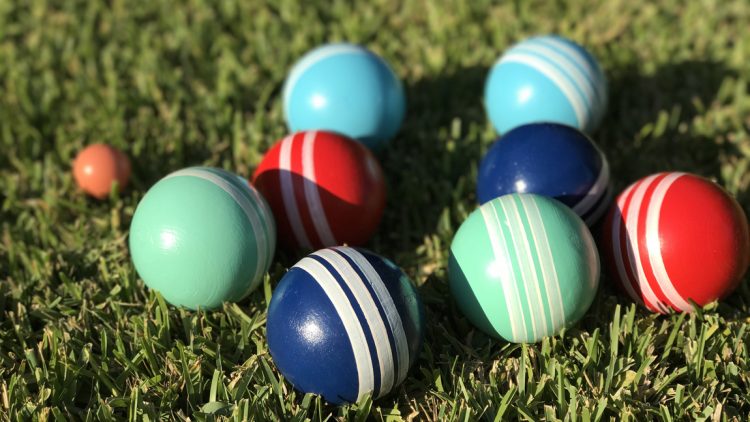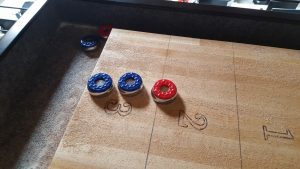What Are The Rules of Pickleball?
Pickleball is a popular racquet sport that combines elements of tennis, badminton, and table tennis. Here are the basic rules of pickleball:
1. Court and Equipment
- Court Size: The pickleball court measures 20 feet wide and 44 feet long for doubles, and the same size for singles. The net height is 36 inches at the ends and 34 inches in the center.
- Equipment: Players use a solid paddle and a plastic ball with holes (similar to a wiffle ball).
2. Game Objective
- The main objective is to score points by hitting the ball over the net and landing it in the opponent’s court. The game is played to 11 points, and a player must win by at least 2 points.
3. Serving Rules
- Serve Position: The serve must be made from behind the baseline, and the server must stand behind the baseline and between the sideline and centerline.
- Underhand Serve: The serve must be made underhand and hit below the waist. The paddle must make contact with the ball in an upward motion.
- Diagonal Serve: The ball must be served diagonally to the opponent’s service court. It must clear the non-volley zone (the kitchen) and land within the opponent’s service box.
- Faults on Serve: If the serve hits the net and lands in the correct service box, it is considered a let serve and replayed. If it lands outside the service box or in the kitchen, it is a fault, and the serve is lost.
4. Scoring
- Only the Serving Team Can Score: Points can only be scored by the serving team. If the receiving team wins the rally, they gain the serve but do not score a point.
- Switching Serve: Players switch serving sides after every point scored.
5. Rally Rules
- Double Bounce Rule: The ball must bounce once on each side before players can hit it in the air. This means that the receiving team must let the serve bounce before returning it, and the serving team must let the return bounce before hitting it.
- Non-Volley Zone (Kitchen): Players cannot hit the ball out of the air (volley) while standing in the non-volley zone, which is 7 feet from the net on both sides. Players can enter the kitchen to play a ball that has bounced.
6. Faults
- A fault occurs when:
- The ball is hit out of bounds.
- The ball does not clear the net.
- A player volleys the ball while standing in the non-volley zone.
- The ball is hit before it has bounced on both sides.
- The server steps on or over the baseline during the serve.
7. Winning the Game
- Games are played to 11 points, but you must win by at least 2 points. Some tournaments may play to 15 or 21 points with the same two-point margin rule.
8. Player Positions
- In doubles, players usually adopt specific positions. The serving team will have one player serve from the right side, and players can switch sides after each point won.
These are the fundamental rules of pickleball, but as with any sport, players should familiarize themselves with specific local or tournament rules that may vary slightly from the general guidelines.
What Are Good Pickleball Strategies?
Effective strategies can significantly improve your pickleball game, helping you win more matches and enhance your overall enjoyment of the sport. Here are some key strategies to consider:
1. Master the Basics
- Consistent Serving: Focus on serving consistently to set the tone for the rally. Aim for depth and placement to make it difficult for your opponent to return.
- Return with Purpose: Aim to place your returns deep into your opponent’s court, targeting their weaknesses or corners.
2. Control the Net
- Get to the Net Quickly: After the serve and return, move to the net as soon as possible. Controlling the net allows you to take advantage of volley opportunities and put pressure on your opponents.
- Maintain Position: Once at the net, maintain a stable position. Keep your paddle up and ready to react quickly to your opponents’ shots.
3. Utilize the Non-Volley Zone (Kitchen)
- Kitchen Strategy: Use the non-volley zone strategically by hitting drop shots that land softly in the kitchen, forcing your opponents to hit upward.
- Avoiding Volleys in the Kitchen: Be cautious when you are near the kitchen; avoid hitting volleys from within it to prevent faults.
4. Work on Placement and Angles
- Change Angles: Use angled shots to pull your opponents off the court, creating open spaces for winning shots.
- Target Weak Spots: Identify and exploit your opponents’ weaknesses, such as their backhand or movement speed.
5. Communication in Doubles
- Clear Communication: If playing doubles, communicate with your partner about who will take which shots. Establish signals for strategies and plays.
- Cover for Each Other: Be aware of your partner’s position and adjust your positioning to cover the court effectively.
6. Vary Your Shots
- Mix Up Your Shots: Use a variety of shots, including drives, dinks, lobs, and smashes. Keeping your opponents guessing can create opportunities for errors.
- Utilize Spin: Experiment with topspin and backspin to add complexity to your shots, making them harder to predict and return.
7. Keep Your Opponents on Their Toes
- Change Pace: Vary the speed and pace of your shots to disrupt your opponents’ rhythm. Mixing fast and slow shots can create openings.
- Drop Shots and Lobs: Incorporate drop shots to pull opponents forward, then use lobs to catch them off guard when they move in.
8. Mental Game
- Stay Focused: Concentration is key in pickleball. Stay focused on the ball and anticipate your opponents’ moves.
- Stay Positive: Maintain a positive attitude, regardless of the score. Staying relaxed and confident will enhance your performance.
9. Practice Defensive Skills
- Be Prepared to Defend: When receiving powerful shots, focus on controlling your paddle and positioning to return the ball effectively.
- Utilize Blocks: Use blocking techniques against hard shots to keep the ball in play and regain control of the rally.
10. Know When to Be Aggressive
- Attack Opportunities: Be aggressive when you see an opportunity, such as a weak return or a high ball. Seizing these chances can lead to quick points.
- Recognize Patterns: Pay attention to your opponents’ tendencies and look for patterns in their play to exploit during critical moments.
11. Fitness and Conditioning
- Stay Fit: Improve your overall fitness to enhance your movement on the court. Quick footwork and stamina are essential in pickleball.
- Warm-Up and Stretch: Always warm up and stretch before playing to prevent injuries and improve performance.
By implementing these strategies, you can enhance your pickleball skills and enjoy the game even more. Practice these tactics regularly, and adapt them to your playing style and the specific dynamics of your matches.
Canyon Winds Retirement Offers Assisted Living in Mesa, Arizona
Canyon Winds Retirement is an assisted living facility in Mesa, Arizona. To schedule a tour of our assisted living facility, contact SLS Communities or for more information please call us today at 480-405-1129.
More Articles About Senior Living
- Assisted Living Facilities Near Me
- Retirement Party Ideas For Coworker
- Covid-19 Vaccine: What Seniors Need To Know
- Retiring In Arizona Pros And Cons
- 5 Crafts For Seniors With Dementia
- Top 5 Best Part Time Jobs For Seniors At Home
- How To Retire Early At 45 – Steps To Retirement
- How To Talk To A Parent With Dementia
- Assisted Living Vs Memory Care
- Assisted Living Pros and Cons | Advantages & Disadvantages
- How To Pay For Assisted Living With Medicare
- How Much Does Assisted Living Cost in Arizona?
- Retirement Wishes For A Boss
- How Much Does Assisted Living Cost In Mesa, Arizona?
- Independent Living Cost Arizona
- How Much Does Independent Living Cost?
- What is Memory Care?
- Benefits of Assisted Living
- Benefits of Independent Living
- Moving from Assisted Living to a Memory Care Facility
- Outdoor Activities For Seniors
- What Is Independent Living?
- What is Assisted Living?
- Retirement, Quotes, Sayings and Wishes
- How To Find A Retirement Community In Mesa, Arizona




